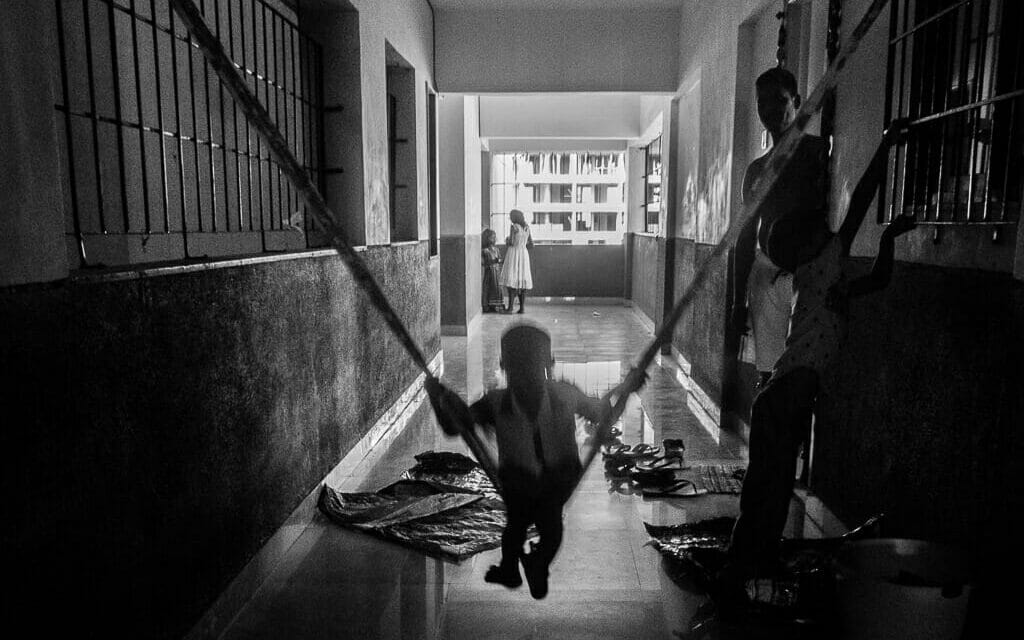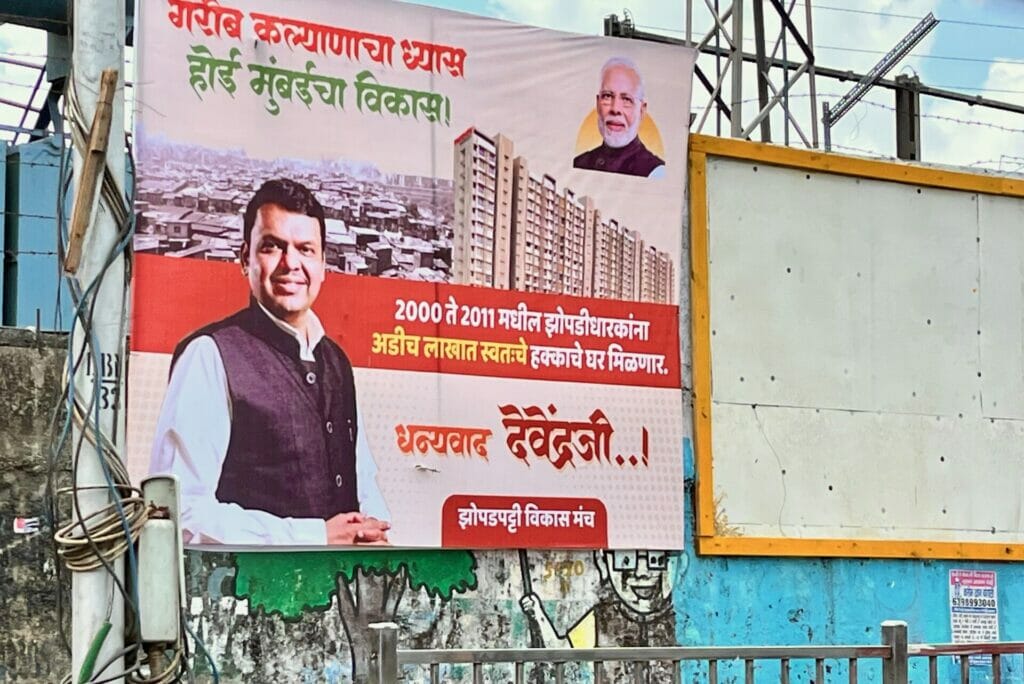On May 25, the Maharashtra government cleared the decks for the first-ever departure from Mumbai’s free rehousing scheme for residents of informal settlements since its inception nearly 28 years ago.
With elections due to the Brihanmumbai Municipal Corporation (BMC), and also to the state Assembly and Parliament next year, the state government announced that slum structures built between 2000 and 2011 would now also be eligible for rehousing under the Slum Rehabilitation Authority (SRA) projects—only, this category of slum structure owners would not get free houses, but would pay Rs 2.5 lakh each. Until now, structures built after 2000 were deemed ineligible for inclusion in SRA schemes.
The government resolution issued by the state housing department said the move had been initiated in May 2018 when the government under then chief minister Devendra Fadnavis had decided that rehabilitation for slum homes built between January 1, 2000 and January 1, 2011 could be undertaken upon collecting a nominal fee for the apartment being provided. To sweeten the deal further, Fadnavis said the owners of these slums could reduce the cost burden through the Pradhan Mantri Awas Yojana subsidy.
Who benefits?
Exactly how many informal settlements will be newly eligible for this low-cost rehousing remains unclear. However, urban planning experts and housing rights activists pointed to other pitfalls, including rapid densification of already crowded areas and the likelihood that the additional construction rights would enrich real estate developers at the cost of greater pressure on already struggling public services.

Architect and urban planning expert Chandrashekhar Prabhu said any slum scheme ostensibly meant to benefit slum-dwellers would in fact benefit builders. In fact, developers would simply pay the Rs 2.5 lakh per home, he said, if the ‘free sale component’ of the scheme fetches greater profits than it did previously.
Chandrashekhar, a former president of the Maharashtra Housing and Area Development Authority (MHADA), said the impact of the additional FSI or TDR generated through the additional rehabilitation should be studied carefully. “We already witness some of the world’s highest population density levels in Mumbai,” he said, “and this will certainly densify parts of the city further.”
SRA since 1995
In 1995, under then Shiv Sena chief minister Manohar Joshi, the Maharashtra government launched the slum rehabilitation scheme to use land and incentive floor space index (FSI) to cross-subsidise builders, who come forward to build apartment buildings for slum clusters. In lieu of the free rehousing, builders received FSI or Transferable Development Rights (TDR), which allowed them additional construction rights anywhere north of the project.
Ahead of Lok Sabha elections in 2014, the Congress-led Democratic Front government in Maharashtra then extended the ‘cut-off date’ to be eligible for the scheme. Instead of January 1, 1995, all slum structures built before January 1, 2000 became eligible for free rehousing. The latest development emerges from the legal impediment to further extend that cut-off date.
Read more: 27 years on, Mumbai’s Slum Rehabilitation Authority (SRA) has failed to deliver
On whether the addition of slum structures built between 2000 and 2011 to the ambit of SRA schemes would significantly boost efforts towards a slum-free Mumbai, Chandrashekhar said the numbers do not suggest that. “The new policy will cater to a small percentage of the nearly six million Mumbaikars (or approximately 12 lakh households) currently living in slums,” he said.
Affordability and liveability
Housing rights activist Shweta Damle, founder of Habitat And Livelihood Welfare Association (HALWA), said the price tag of Rs 2.5 lakh for a 300-sq ft apartment may not be the biggest concern. “If there are loan schemes at low rates of interest or the option to pay in instalments, there would be many takers,” said Shweta. “It is the high cost of maintenance, coupled with the poor construction quality that poses recurring repair costs, that many would be more concerned about.”
These costs, often incurred at the time of relocating when residents find their new building’s sewer line choked or lifts out of order, have led to many SRA project beneficiaries renting out their tenements and residing elsewhere.
Read more: Interview with Slum Redevelopment Authority (SRA): Where does the slum-free Mumbai goal stand?
From a planning perspective, however, Shweta said the new policy ignores crucial aspects of the quality of life post-resettlement. With greater numbers of tenements to be built for relocation, the lacklustre design of these structures, marked by poor attention to wind direction, ventilation, open spaces and common utility spaces, could only shrink further. “This will undermine the very purpose of rehabilitation,” she said.

Activist Bilal Khan of the Ghar Banao Ghar Bachao Aandolan said the sum of Rs 2.5 lakh is not at the core of how slum-dwellers view the new development. “The other issues are more significant,” he said. “For example, maintenance becomes prohibitively expensive when SRA builders include tenements meant for persons affected by infrastructure projects in the same building as the rehabilitation component of SRA schemes.” Several SRA buildings have thus become ultra high-rise constructions. “Maintenance of lifts and other amenities in these 30-storey or 40-storey buildings becomes unviable.”
Another urban planner, who preferred not to be named, said as redevelopment is undertaken plot by plot, there can be no increase in shared open spaces. “Density, already high, is raised further by the occupants of the additional for-sale apartments. Amenities per capita, already too low, are further lowered because of the added numbers.” He added that if the Rs 2.5 lakh being collected per tenement is paid to the developer, the builder in fact gets a higher, not lower, incentive.
Confusion in implementation
Additionally, the May 25 GR did not specify whether it would also cover rehabilitation of slums through special purpose vehicles, such as the Dharavi Redevelopment Project that is scheduled to finally take off later this year. A senior bureaucrat said the matter was still to be discussed with the developers.
The policy change comes against a rather sedate pace of slum rehousing since the SRA was established, despite announcements by the Shiv Sena in the late 1990s that the scheme would rehouse 40 lakh slum-dwellers. In fact, since its inception to December 2022, the SRA completed 2,231 projects, benefiting 2,45,295 families, according to government data.
Chandrashekhar said if the government is really serious about creating a slum-free Mumbai, it should scrap existing SRA schemes. “It should replace them with people-oriented schemes, including self redevelopment, and let the slum dwellers choose which one is best suited for them,” he said.